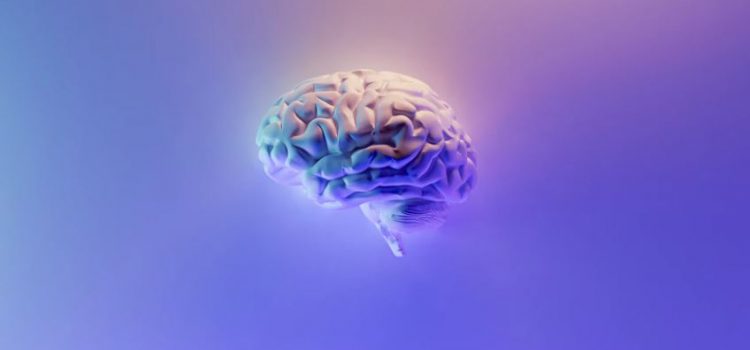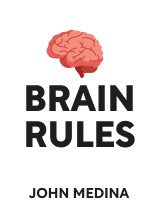

This article is an excerpt from the Shortform book guide to "Brain Rules" by John Medina. Shortform has the world's best summaries and analyses of books you should be reading.
Like this article? Sign up for a free trial here .
How did the evolution of the brain make humans so intelligent? What makes humans so special compared to other species?
Humans are arguably the smartest creatures on Earth, and it all has to do with the human brain. Evolution played a key role in humans’ brain development, which created three distinct human characteristics that set humans apart from other species.
Learn how the evolution of the brain made humans so unique, according to Dr. John Medina.
Our Brains Have Evolved for Survival
Medina discusses how the physical adaptations of the human body helped our brains to develop in the advanced way that led to our species’ unique intelligence. He says that the human brain evolution led to the development of three uniquely human characteristics: the ability to imagine, the ability to embrace variety, and the ability to cooperate.
By understanding the evolution of the human brain and how it led to these characteristics, we can learn how brain evolution has allowed us to thrive.
Physical Adaptations Allowed for Brain Development
According to Medina, one particular advance played a major role in the human brain evolution: the ability to walk on two legs instead of four, which happened when we migrated from forests to grasslands and needed to travel long distances to get food and water.
Not only did walking on two legs allow us to cover more ground quickly, but it’s also a less energy-intensive method of moving around, and thus allowed our bodies to devote more resources to our brain development than our basic bodily functions.
| Another Theory for Why Humans Walk on Two Legs Medina and many contemporary scientists believe that walking on two legs allowed for crucial brain development—and there’s research that backs it up, including that chimpanzees use much less energy when they walk on two legs than when they walk on four, suggesting that the brain could use that spared energy. The same research suggests another plausible theory that Medina does not address, which is that we evolved to walk on two legs to make it easier to carry food. Researchers also found some support for this theory, because chimpanzees often walk on two legs when carrying important food. |
Three Distinctly Human Characteristics
Medina argues that as human brains evolved, we developed the ability to think rationally, which allowed us to deal with difficult, changing, or complex circumstances. This led to the development of three human capabilities that form the basis for society and culture: imagination, the ability to adapt to variation, and cooperation.
1. We Can Use Our Imaginations
One key characteristic of humans that sets us apart from other species is our imaginative capability, which allows us to engage in symbolic reasoning, or the ability to make meaning from things that aren’t inherently meaningful. For example, when you look at a cloud and think it’s shaped like a turtle, you’re using symbolic reasoning.
Symbolic reasoning has allowed for the development of many central aspects of human existence, like written language, artistic expression, mathematics, and science. It’s also enabled us to develop societies and culture, which required the ability to imagine ways of life that didn’t already exist: for example, agriculture, towns & cities, and formal education
2. We Embrace Variation
Human’s unique brain evolution also led to another specifically human characteristic: our acceptance of variation and change, which was necessary because early humans had to deal with great instability.
As humans evolved, the climate began to change rapidly. While early humans lived in hot, humid environments, later humans had to deal with a climate that constantly changed from hot to cold. We’ve mentioned that early humans migrated from forests to grasslands. They did this, in part, to find new sources of food in an ever-changing climate. Once there, they not only had to adjust to a new environment but also contended with the species already living there. Many of these species were stronger than humans.
In response to these massive changes in our environments, our brains developed the ability to quickly solve problems and to learn from past mistakes. We evolved the ability to retain memories and to make decisions based on those memories. As a result, we now have brains well-equipped to adapt to new environments and respond to new situations.
3. We Cooperate With Others
Another key human characteristic Medina outlines is the ability to cooperate with one another.
Since humans are not as strong as many other animals, we had to develop the ability to work with one another to survive. People developed an essential skill to make this possible: the ability to imagine what others may be thinking or feeling by using the human brain. Evolution is more than just an individual changing and growing; it’s about humans working together to create a society.
People ascribe motivations and feelings to one another, and even sometimes to animals and objects. Because we can “read” people’s emotions, we can communicate and solve complex problems with one another. Medina suggests that symbolic reasoning may have developed so we could imagine people’s thoughts and feelings.

———End of Preview———
Like what you just read? Read the rest of the world's best book summary and analysis of John Medina's "Brain Rules" at Shortform .
Here's what you'll find in our full Brain Rules summary :
- An explanation of how the brain works in a simple and accessible way
- The 12 rules that help fulfill the core functions of the brain
- How to improve your thinking and learning abilities






